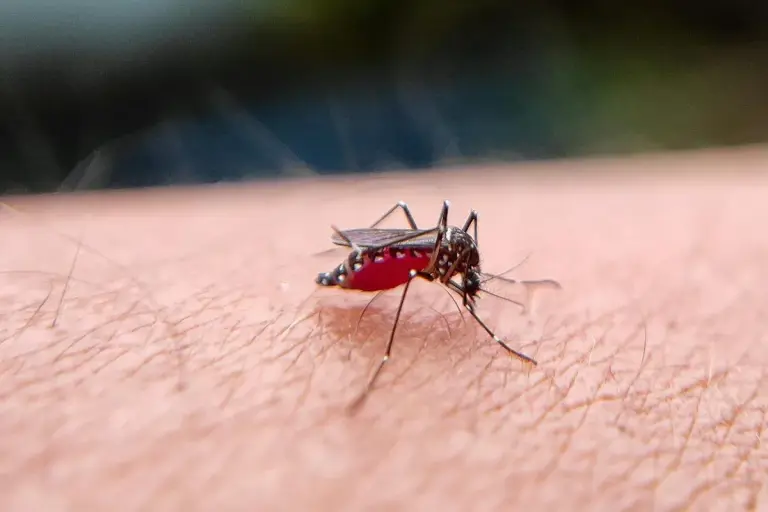A significant dengue outbreak continues to pressure Panama’s public health system with 13,844 confirmed infections and 23 fatalities recorded so far in 2025. The Ministry of Health (Minsa) released new data this week showing a sharp increase in cases and one additional death compared to the previous report. This ongoing health crisis is concentrated in the nation’s most densely populated regions.
The latest epidemiological report covers the period through October 25. Health officials documented 308 new cases and one additional death since the previous week’s update. The national incidence rate has now reached 303 infections per 100,000 residents, highlighting the outbreak’s extensive reach across the country.
Regional Outbreak Distribution and Hospitalizations
Panama’s Metropolitan Health Region leads the nation with 4,255 confirmed dengue cases. San Miguelito follows with 2,448 infections while Panama Oeste reports 1,486 cases. Other significantly affected areas include Panama Norte with 1,293 cases, Chiriquí with 824, Bocas del Toro with 772, and Veraguas with 519. The indigenous regions of Ngäbe Buglé and Guna Yala report 66 and 15 cases respectively.
Medical facilities have hospitalized 1,340 patients this year due to complications from dengue fever. The majority of infections, 12,275 cases, presented without warning signs. Another 1,474 cases showed concerning symptoms while 95 patients developed severe dengue requiring intensive medical intervention.
The coexistence of four dengue serotypes in the country, with predominance of DENV-3 and DENV-4, increases the risk of severe cases and fatal complications. [Translated from Spanish]
Minsa officials emphasized that the presence of multiple virus strains creates greater potential for serious health outcomes. They specifically identified DENV-3 and DENV-4 as the currently circulating dominant variants.
Local Impact and National Response
Several specific communities are experiencing particularly high infection rates. Tocumen leads with 980 cases followed by 24 de Diciembre with 830 infections. Belisario Frías records 572 cases while Belisario Porras has 533 and Ernesto Córdoba Campos reports 349 confirmed infections.
The outbreak primarily affects Panama’s working-age population. People between 10 and 49 years old account for the majority of infections according to the epidemiology department’s analysis. This demographic pattern underscores the outbreak’s economic implications beyond its direct health consequences.
Health authorities maintain intensive mosquito control operations targeting the Aedes aegypti mosquito responsible for disease transmission. These insects thrive in urban environments and breed in small water containers commonly found in residential areas. The same mosquito aedes aegypti can transmit other diseases including yellow fever, Zika, and chikungunya.
The entity reiterates its call to the population to eliminate breeding sites inside and around homes, especially containers that accumulate water, such as cans, bottles and tires. [Translated from Spanish]
Minsa continues to emphasize community participation in outbreak control. Officials stress that eliminating standing water around homes remains the most effective prevention method available to citizens.
Public Health Recommendations and Fatality Distribution
Medical authorities strongly advise against self-medication when dengue symptoms appear. They urge anyone experiencing fever, headache, general malaise, muscle pains or eye pain to seek immediate professional medical attention. Proper clinical management significantly reduces the risk of severe complications from this mosquito-borne viral illness.
The 23 dengue-related fatalities recorded this year are distributed across multiple regions. Chiriquí and Bocas del Toro both report four deaths each. Other affected regions include Metropolitan, Darién, Panama Este, Coclé, San Miguelito, Los Santos, Herrera, Panama Oeste and the Ngäbe Buglé Comarca.
Panama’s health system faces ongoing challenges managing both routine healthcare and this extraordinary outbreak. The steady case increase throughout 2025 demonstrates the persistent public health threat posed by the aedes aegypti mosquito despite continuous control efforts. Understanding epidemiology patterns helps health officials target interventions where they are most needed.
This current outbreak situation reflects broader regional trends across Central America where dengue transmission has intensified in recent years. Climate conditions, urbanization patterns, and viral evolution all contribute to creating favorable environments for disease spread. The Panamanian ministry of health continues to monitor the situation closely as the rainy season progresses.



